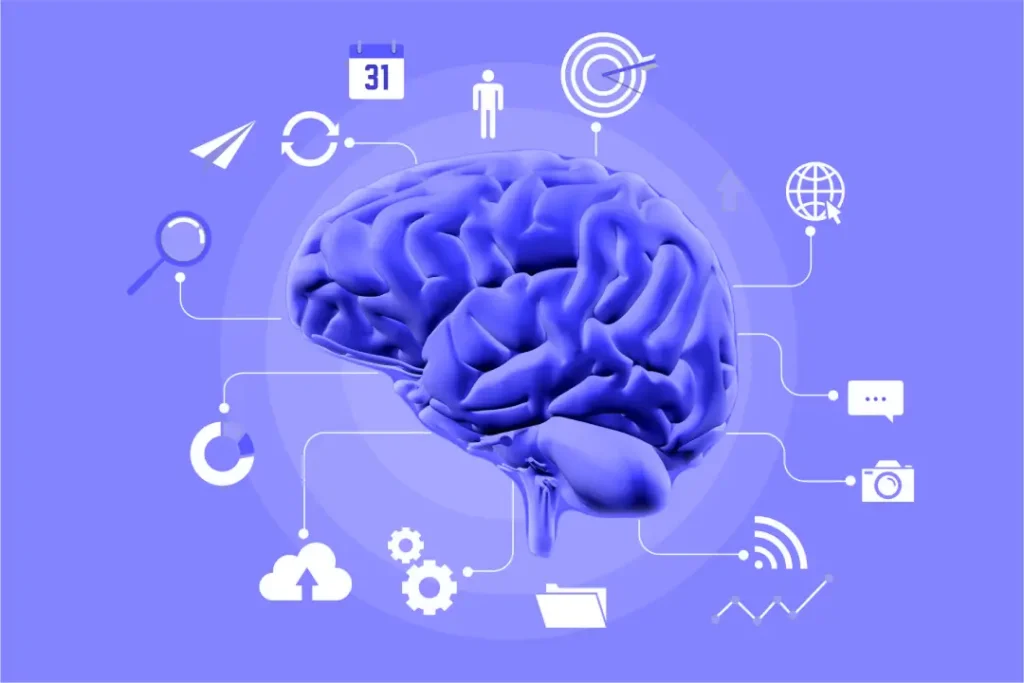In recent years, combining neuroscience with market research has become important. As companies aim to better understand consumer behavior, using neuroscience offers a more scientific and detailed look into how people make buying decisions. This method is more accurate than traditional methods, which often depend on biased self-reported data. By studying brain responses directly, researchers can gain better insights, improving their marketing strategies. Businesses are quickly adopting these techniques to stay competitive and meet their customers’ complex needs.
This article explores the exciting combination of neuroscience and market research, showing how these fields work together to provide deeper, more useful insights. It covers basic neuroscience concepts relevant to marketing, the methods and tools used by consumer research companies in neuro-marketing research, and how brain triggers affect consumer behavior. It also discusses the benefits and ethical issues of using neuroscience in market research.
Table of Contents
The Basics of Neuroscience in Marketing
Understanding the basics of neuroscience is essential for marketers who want to understand consumer decision-making. Neuroscience studies how the brain works and responds to different stimuli, providing valuable insights into consumers’ subconscious preferences and biases. Important concepts like neural pathways, synaptic connections, and brain regions such as the amygdala and prefrontal cortex help explain how emotions, memories, and rational thoughts influence purchasing behaviors.
By using these insights, marketers can create strategies that appeal to consumers’ natural responses, making their campaigns more compelling and effective. For example, knowing how the amygdala processes emotions can help brands evoke desired feelings in their advertising, leading to stronger customer engagement and loyalty. Additionally, understanding the brain’s reward system can guide the creation of promotions and offers that trigger positive feelings, encouraging repeat purchases. A consumer insights analyst can further refine these strategies by analyzing consumer behavior data, ensuring that campaigns resonate with specific target audiences and maximize their impact.
Methods and Tools in Neuro-Marketing Research
In neuro-marketing research, various techniques and technologies are used to understand consumer reactions and decision-making. Electroencephalography (EEG) measures brain electrical activity, giving real-time data on how consumers react to different things. Functional Magnetic Resonance Imaging (fMRI) takes it further by capturing brain activity through blood flow changes, showing detailed images of which brain areas are active during specific tasks.
Eye tracking technology monitors where and how long a person looks at different parts of an ad, revealing what catches their attention. These tools help researchers understand subconscious preferences better than traditional methods. By knowing these hidden responses, marketers can create strategies that connect more deeply on an emotional and cognitive level.
Neurological Triggers and Consumer Behavior
Neurological triggers greatly influence how consumers behave by impacting their emotions, memory, attention, and sensory experiences. For instance, emotions can drive buying decisions by creating strong connections with a brand; a positive reaction to an ad can boost customer loyalty. Memory helps consumers remember and recognize brands and products, making familiar items more likely to be purchased.
Attention, guided by both conscious and unconscious processes, determines what consumers notice and how long they focus on it, affecting their overall experience and choices. Sensory processing, such as how consumers perceive colors, sounds, and textures, also influences their preferences and purchases. By understanding these triggers, marketers can create strategies that resonate more with consumers, resulting in more effective and targeted campaigns.
Benefits of Neuroscience in Market Research
Using neuroscience in market research brings many benefits that improve understanding of what consumers like and how they behave. By studying brain activity, researchers can find subconscious reactions that traditional methods might miss, giving deeper insights into what really drives consumer choices. This advanced understanding helps create more focused and effective marketing strategies, like personalized campaigns that connect with consumers on an emotional and cognitive level.
Neuroscience also improves predictive modeling, making forecasts of consumer behavior more accurate by using neurological data instead of just historical trends. This way, businesses can develop marketing strategies that are scientifically based and highly responsive to their audience’s needs and preferences, ultimately building stronger consumer relationships and brand loyalty.
Ethical Considerations and Challenges
When using neuroscience in market research, ethical issues and challenges come up that need careful handling. A major concern is consumer privacy. Brain activity data reveals personal thoughts and emotions, so it’s important to use this information responsibly and with full consent. Another challenge is data transparency; consumers must know how their neurological data is collected, stored, and used.
There’s also a risk of manipulation, as understanding subconscious triggers could lead to overly persuasive marketing, potentially crossing ethical boundaries. Balancing the quest for deeper insights with the protection of consumer rights requires strong guidelines and ethical standards to ensure that using neuroscience in market research benefits both businesses and consumers without compromising integrity or trust.
Integrating neuroscience with market research offers a powerful means to uncover deeper insights into consumer behavior, surpassing the limitations of traditional methods reliant on self-reported data. By leveraging advanced techniques like EEG, fMRI, and eye-tracking, marketers can tap into subconscious responses, crafting more compelling and targeted campaigns. Understanding neurological triggers such as emotions, memory, and sensory processing allows for the creation of strategies that resonate on a fundamental level. Despite the ethical challenges, including privacy concerns and the potential for manipulation, adhering to strict ethical standards can ensure these innovative approaches enhance consumer relationships and brand loyalty, driving more effective marketing outcomes.
